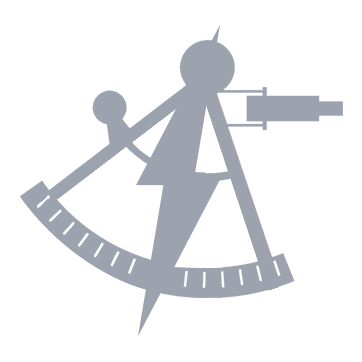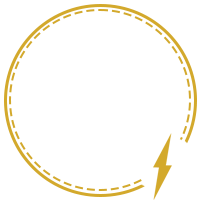A dramatic shift in momentum launched Captain Devreux out of the captain’s chair and onto the floor, the inertial dampeners unable to keep up with the unexpected deceleration of the Polaris’ warp field collapsing. As he pulled himself back to his feet, he glanced quickly around the bridge, noting with relief that the other crew on deck were ok, coming back to their senses with no visible injuries. The same could not necessarily be said for the rest of the crew down below deck, but he knew capable hands were already hard at work on that.
“Status report?” Captain Devreux asked as he glanced forward, noting the white streaks of celestial bodies passing by at high warp had been replaced by the static starscape of a ship at impulse.
“Captain, our warp field appears to have collapsed,” reported the flight controller at the helm.
“A malfunction with the warp assembly?”
“Negative sir,” replied a lieutenant at the operations station as his hands flew across the controls. “Warp core within standard operating parameters. Dilithium matrix integrity at 97%. Injectors registering appropriate flow. Stable plasma output across the coils. The warp field, by everything I can tell, was stable.”
“Then what happened?” the Captain inquired as the turbolift doors opened and a Commander in science teal stepped out.
“I’m not sure…” began the lieutenant, before he was cut off.
“What happened is that something is wrong with subspace itself,” explained Commander Lockwood, head of Astrophysical & Exotic Sciences for the Advanced Science, Technology and Research Activity, as he approached the command island. He handed the PADD to the Captain, as if it would clear up the confusion. “Or more specifically, the geometry of spacetime around us contradicts the ADM formalism.”
Although Captain Devreux knew his way around a warp core, he prided himself in his engineering prowess, not his capacity for theoretical physics. “In English, Commander?” he asked. The alphabet soup of equations on the PADD could just as easily have been a recipe for a Jiballian Fudge Cake as an explanation of why they fell out of warp.
“The Natario and Alcubierre metrics rely on certain fundamentals like Hamiltonian mechanics, Minkowski space, and tensor mathematics,” the Commander replied. “Those fundamentals are incongruous here with what we know them to be.”
The Captain still wasn’t sure he followed.
“Think about what would happen if the speed of light were different than what we knew it to be,” offered a female voice as Admiral Reyes emerged from her Ready Room and approached the two officers standing on the command island. “We wouldn’t be able to send messages, use our sensors or go to warp. If I understand right, that’s essentially what appears to be happening here, right Dr. Lockwood?”
“Well, technically speaking, c has remained consistent…” the physicist began before realizing the Admiral was simply talking in layman’s terms for the Captain’s benefit, “but yes, while an oversimplification, that’s the jist of the issue. Subspace here isn’t like the subspace we know.”
“When you say here, do you mean specifically here?” asked Captain Devreux. “Or more generally in this region of space. Like can we turn around and go back the way we came?”
“From what sensors are suggesting,” offered Commander Lockwood, “subspace is unstable for 1.7 light years behind us and the foreseeable distance in front of us, so no, we can’t turn around and jump back to warp.”
“Commander Lockwood, how did we end up making it this far? Shouldn’t the warp field have collapsed 1.7 light years ago then?” asked Captain Devreux.
“Maybe if you assumed linearity in subspace field equations, but of course that’s not the case,” Commander Lockwood answered. How the folks that travelled on starships for their life didn’t understand the basics of how the ships actually moved around baffled him. “When we’re at warp, we’re riding a subspace distortion that contracts space in front of us. That contraction, which was already in existence, created a semi-destructive interference pattern in the spacetime waveform that reduced the amplitude of the variation between the spacetime behind us and the spacetime in front of us. Until aggregate effects overwhelmed our injectors’ ability to compensate.”
Admiral Reyes was still following, but barely, and her expression showed as much, so Lockwood gave up trying to give them a real answer.
“Essentially,” the Activity’s lead scientist explained, dumbing it down as much as he could, “we extended our spacetime into this unstable spacetime for a brief period of time, allowing us to ignore the inconsistencies with subspace for the equivalent of 1.3 light years in normal space.”
“I think we now know the plight of the Casimir and the Arleigh Burke,” mused Commander Lewis, the ship’s Chief Intelligence Officer, in reference to the two ships that they’d been dispatched to find. “Guess the good news is that, if their plight was at all like ours, they too are just stranded at sublight.”
Reyes noted the comment, but for now, her focus was on their own plight. The first rule of a rescuer is not to need rescue. “Could we do that in reverse?” They’d never be able to save the others if they couldn’t save themselves.
“Unknown. I’d have to spend a good deal longer than two minutes on that.”
“Alright Commander, assemble your team and let’s get to work figuring that out,” Captain Devreux ordered, finally getting his bearings in the conversation again. He handed the PADD back to the scientist. “But not just to see if we can get out of here. Let’s also figure out if we can use the same principle to continue our journey forward.” They still had two missing ships to find, and, always an explorer at heart, Devreux also recognized that an area of space where warp fields didn’t work right meant a place that probably hadn’t been explored in depth.
“Understood sir. We’ll get right on it,” acknowledged Commander Lockwood before accepting the PADD and heading back for the turbolift.
“In the meantime, let’s make the most of where we’re at,” Captain Devreux said as he turned his attention back towards the viewscreen, a star in the distance with what looked like the silhouette of a planet in-between. “What’ve we got on sensors?”
“Although long range sensors are inoperable because of the subspace interference, short range scanners indicate we have emerged within a solar system of a G5IV star with three habitable worlds, one Class M and two Class L,” reported the lieutant at the operations console.
“I’m detecting notable signs of advanced anthropogenic developments on all three habitable planetoids,” added the tactical officer. “Visual scans of the nearest Class L planet indicate substantial terraforming and large metropolitan centers in at least 10 distinct locations. However, sensors are not detecting any electromagnetic or radiogenic activity.”
“A dead world?”
“It would seem so,” the tactical officer replied, “but I still advise we go to yellow alert.”
“Make it so,” nodded the Captain. “And let’s launch a probe towards the nearest planet to get a better idea of what we’re working with.”
The tactical officer issued a series of commands. “Probe away.” Looking forward towards the viewer, Captain Devreux watched as a Class 5 probe streaked out from the Polaris, propelled by impulse thrusters that accelerated it at relativistic speeds towards the nearest planetoid. “ETA 2 minutes.”
As they waited in suspense for the probe’s arrival, Captain Devreux rattled off a series of questions about the status of the ship and crew to the various bridge officers. Although the shearing forces of falling out of warp had been intense, they’d come through relatively unscathed. Whether it was on account of some complex outcome of the Alcubierre metric or a streak of luck that had allowed them to survive the abrupt return to normal space, Captain Devreux didn’t know, nor was he sure he really wanted to know.
Admiral Reyes had taken up position just off the main command island, leaving the Captain free to manage the runnings of his ship. For her sake, she was exchanging a series of messages via PADD with the team buried in the Advanced Science, Technology and Research Activity labs below-deck. They were trying to make sense of what had just happened, what was wrong with subspace, and if they could come up with a workaround for the subspace instabilities. So far, there were more questions than answers. It sounded like the consensus was that they’d essentially have to design a whole new version of physics to model this region of space. Not exactly something that could be done in a day or two, but as opposed to the Casimir, a deep space explorer, and the Arleigh Burke, a tactical interdictor, the Polaris at least had the people to do it – although it might take months to do so. Until then, they were trapped at impulse power in the same plight as the Casimir and the Arleigh Burke. A very concerning situation, to say the least. She’d wait and hope the ASTRA science team found something more before sharing that news with the rest of the crew.
“We’re getting our first images from the planet,” reported the tactical officer after the status reports were all in.
“On screen.”
The entire bridge crew turned and looked forward as a scene of death and destruction appeared on the viewscreen. The images returning from the probe showed a massive and advanced city, comparable to something you’d expect to see on Earth or Vulcan, with two exceptions: the city was littered with craters the size of neighborhoods, and it lay completely empty and abandoned.
“What happened to everyone?” mused a junior officer near the MSD, forgetting professionalism for a moment, his mouth agape.
“Readings suggest an urban area capable of supporting 20 to 40 million humanoids,” reported the officer at the science console. “But whoever lived here, they’ve been gone for hundreds, if not thousands, of years.”
“Looks like we’ve got more than one mystery on our hands,” smiled Captain Devreux with an enthusiastic look in sharp contrast to the rest of the bridge staff. “While we’re stuck here, might as well make the best of it. Commander Lewis, while we try to figure out how to get the ship back underway, why don’t you assemble a landing party and see if we can’t learn a bit about who used to live here and what happened to them?”
The Admiral envied the explorer spirit of her colleague. Even faced with the prospect of being stuck years from the nearest Starfleet support ship at impulse, Captain Devreux’s explorer spirit held strong. This is why she’d never considered another option for her executive officer on this assignment. She’d monitor their progress from aboardship, for she was sure Captain Devreux would elect to join the field research team heading down to the surface. Maybe they’d make some progress on getting the ship back underway in the meantime.

 Bravo Fleet
Bravo Fleet








